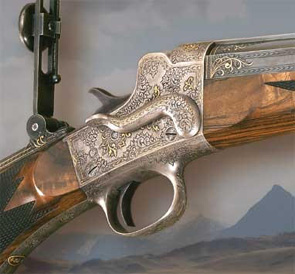

 The Accurate Reloading Forums
The Accurate Reloading Forums  THE ACCURATE RELOADING.COM FORUMS
THE ACCURATE RELOADING.COM FORUMS  Rifles
Rifles  Single Shot Rifles
Single Shot Rifles  dry-firing Ruger No 1
dry-firing Ruger No 1Go  | New  | Find  | Notify  | Tools  | Reply  |  |
| One of Us |
Great article on the No one in current issue of Rifle Magazine by Brian Pearce in which he states "Other No 1 features include a firing pin that is angled at 5 degrees from the axis to the bore. Additional clever engineering allows dry firing without damage to the firing pin." Just want to put that out there for comment while I consider this. Am I good to go? Rik | ||
|
| One of Us |
Regardless of how well various rifles can or cannot tolerate dry-firing it is still best to avoid the practice or to use snap caps. The primary design of the firing pin is to strike a primer. That said, I have used dry firing extensively when practicing with numerous M1911, M9, and M16/M4s, and other military weapons. But we had an unlimited supply (in our minds at least) of firing pins, hammers, and other parts. It was nothing to strip them down and replace a part. Can you do that with your Ruger No.1? . | |||
|
| One of Us |
I dry fire the hell out of all the #1s I have owned since my first one, a 45-70 1976 Bicentennial model. No problems noted yet. Yes, #1 firing pins are easy to remove. But the hammer actually stops on the solid breech block which is why they don't break. | |||
|
| one of us |
Yes, it is probably true that firing pins break more often on guns that are dry fired than on ones that are not fired at all - but when I was with the marksmanship unit in Ft Benning we dry fired our weapons daily, thousands upon thousands of times, for practice and I was not aware of anyone who experienced problems. And Joe Nava, who has taught firearm safety courses all around northern Alaska for decades, has a rather large fleet of handguns that have been dry fired tens, if not hundreds, of thousands of times and that still work as designed. Other than for older firearms, or inexpensively build .22's, I don't think dry firing presents much of a problem. Anyone who claims the 30-06 is ineffective has either not tried one, or is unwittingly commenting on their own marksmanship Phil Shoemaker Alaska Master guide FAA Master pilot NRA Benefactor www.grizzlyskinsofalaska.com | |||
|
One of Us |
I've dry fired my No. 1, Boddington model 300H&H thousands of times at this point. No problems so far. Same can be said for my bolt guns. For my doubles, I always use snap caps and monitor the plastic piece on which the firing pin strikes for wear. | |||
|
| One of Us |
The hammer in a #1 actually hits a small lever or flipper that in turn hits the firing pin. It looks like the firing pin impact might be reduced some by this arrangement. 
| |||
|
| one of us |
I also have dried fired my No. one thousands of times | |||
|
| Powered by Social Strata |
| Please Wait. Your request is being processed... |
|

Visit our on-line store for AR Memorabilia

